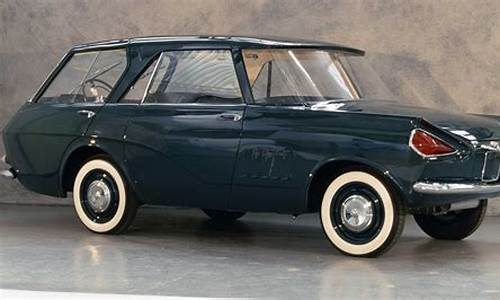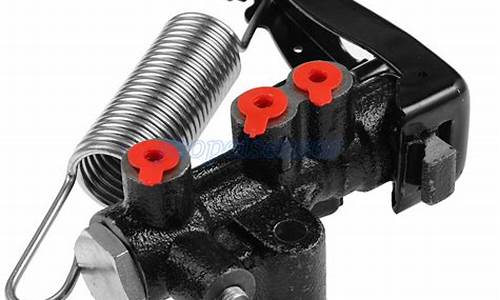您现在的位置是: 首页 > 车型大全 车型大全
concept900
佚名 2024-05-22 人已围观
简介concept900非常欢迎大家参与这个concept900问题集合的探讨。我将以开放的心态回答每个问题,并尽量给出多样化的观点和角度,以期能够启发大家的思考。1.200分求翻译2.长城哈弗h6路虎款3.2010年世界跑车
非常欢迎大家参与这个concept900问题集合的探讨。我将以开放的心态回答每个问题,并尽量给出多样化的观点和角度,以期能够启发大家的思考。
1.200分求翻译
2.长城哈弗h6路虎款
3.2010年世界跑车排行榜
4.会计基础题。某公司由甲乙丙三位股东各出资300万设立,此时有实收资本900万元。
5.新款军用车

200分求翻译
我叫XXX,男,XX年X月X日出生于山西省大同市。父母亲都是国家干部、公务员。
在我的成长过程中,家庭教育理念使我受益匪浅。在我很小的时候,父母就很注重对我文化修养和综合能力的培养。我从四岁起开始学习电子琴,学习了五年,掌握了一定的乐理知识,培养了我对音乐浓厚的兴趣;十岁起利用业余时间学习游泳和乒乓球,使我今天有了一个强壮的身体.从小爸爸就教导我怎样去做人,培养我做一个遇事坚强,做事有毅力,对什么事情都要充满责任感的人。而妈妈则给予了我无边的慈爱,潜移默化的培养了我对事细腻,对人友爱的性格特点。在这种教育环境下,我慢慢的长大成人了。在我学习文化知识的过程中,从小学到高中,家长不惜一切代价安排我到最好的学校就读。在大同市城区第四十一小学校、山西省大同市第二中学校、大同机车中学十二年的学习中,我接受良好的教育,并以优秀的成绩拿到了高中毕业证书。在即将步入大学校门时,我选择了韩国釜山大学。原因有三:一是韩国经济发达程度和文明程度都令人称道。二是我选择造船专业做为我今后的主攻学科,而韩国的船舶制造业又是世界排名首位的;三是因为釜山大学是韩国的第二大名校,造船·海洋工学又是全国一流的专业,所以我希望能在这里学到我需要的知识,通过这里更多的了解韩国,结识更多的韩国朋友,将来为中韩经济的共同发展和中韩人民友好不断升温做出我力所能及贡献。
第二部分
学习计划
我叫胡少龙, 男。2007年6月高中毕业后,于9月1日到河南理工大学韩国语言预科班学习韩国语言。
韩国对我来说是个既向往又陌生的地方。抱着加深了解韩国的政治经济和文化,亲身感受韩国文明礼仪,学习掌握韩国的先进技术,的愿望,希望早日能被韩国大学录取。在预科班学习的八个多月里,我以积极的心态参加语言预科班的学习。尤其是来到釜山韩国语言文化院的这近两个月的时间,让我更深刻地理解,学好语言,掌握交流方式,是实现我个人理想的必经之路,也是了解韩国,学习韩国先进技术的基础。
入学以来,在老师的精心指导下,通过自己的努力,现在基本达到了韩语二级水平。我将进一步努力学习,勤学苦练,计划在明年三月釜山大学开学之前,以较好的成绩通过入学考试。
如果能顺利通过釜山大学造船·海洋工学系的考试,从而在2009年3月实现我进入韩国著名国立大学学习升造的愿望。入学后我将加倍地努力,学好各门功课,更希望学成后早日投身到船舶制造事业中去,为中韩经济的共同发展发挥我的作用。
学生:XXX
年 月 日
My name is XXX, male, XX, X, X was born in Datong City, Shanxi Province. Parents are state cadres and civil servants.
I am in the growth process, the concept of family education so that I benefit. In my very small, very focused on my parents cultural cultivation and the cultivation of comprehensive ability. I started learning from the four-year-old flower, a five-year study, have a certain Lelizhishi, I developed a keen interest in music; 20-year-old from the use of spare time studying and swimming and table tennis, so I have a strong body . From father to teach me what to do, I do a training firm in distress, working with perseverance, what should be the full responsibility of the people. The mother was giving me boundless love, nurture the culture of my delicate matter, the friendliness of the people of character features. In this educational environment, I had grown up slowly. I am learning and cultural knowledge in the process, from primary to high school, parents at all costs for me to the best schools. 41 primary and secondary schools in the city of Datong City, Shanxi Province, Datong City in the second school, secondary school Datong Locomotive 12 years of study, I receive a good education, and with excellent results obtained high school diplomas. In the soon-to school at the university, I chose the University of Busan, South Korea. For three reasons: First, the Korean economy developed and the extent of the level of civilization are commendable. Second, I choose as my professional future shipbuilding the main subjects, and South Korea's ship manufacturing industry is ranked first in the world; Third, it is because the University of Busan is South Korea's second largest school, Shipbuilding and Marine Engineering is the first-class professional Therefore, I hope to be in here I need to learn the knowledge, more understanding here by South Korea, to get to know more Korean friends, the future for the common development of China-South Korea economic and friendly people of China and South Korea has been heating up, I made contributions within its capacity.
Part II
Learning Programme
I Jiaohu Shaolong, M. June 2007 after graduating from high school, in the September 1 to the Henan University of Technology study the Korean language matriculation classes Korean language.
South Korea to me is both yearning for another unfamiliar place. South Korea take a better understanding of political economy and culture and experience Korean civilization etiquette, study and master Korea's advanced technology, the desire to want to be accepted at universities in South Korea. Matriculation classes in the study of more than eight months, I with a positive attitude to participate in the matriculation classes language learning. Busan, South Korea in particular to the language and culture of this hospital nearly two months time, let me more deeply understand, learn languages, exchange control, is to realize the only way for my personal ideals, but also to understand the Republic of Korea, South Korea advanced learning Technology.
Admission, in the careful guidance of teachers, through their own efforts, to achieve a basic level of Korean 2. I will make further efforts to study, Qinxuekulian planned in March next year before the opening of Busan University, to better results through the entrance examination.
If successful in Busan Shipbuilding and Marine Engineering University of the examination, in March 2009 I entered the realization of the famous Korean National University of learning or the desire to create. After school I will redouble its efforts to master the door homework and that Xuecheng Hou as soon as possible to join the cause of shipbuilding, for the common economic development of China and South Korea to play my role.
Student: XXX
Explanatory
长城哈弗h6路虎款
北京天坛英文导游词
(Inside the South Gate of the Temple of Heaven)
Ladies and Gentlemen:
Welcome to the temple of Heaven. (After self-introduction) preserved cultural heritages of China. There are basically two kinds of visitors who come here: local pensioners who do exercises here in the morning and evening and sightseers both from home and abroad. All in all ,there are 12 million visitors very year. Now we are going to go along the route that leads to the alter. It will take roughly one hour. Mind you ,the emperor also walked along this route to pay tribute to the God of Heaven.
(Along the Southern Sacred Road leading to the Circular Mound Altar)
The largest group of architectures ever to be dedicated to Heaven ,the Temple of Heaven served as an exclusive altar for Chinese monarchs during the Ming and Qing dynasties. It was decreed that rulers of successive dynasties would place altars in their own capitals to worship Heaven and pray for good harvest. But why ?
The ancient Chinese believed that Heaven was the supreme ruler of the universe and the fate of mankind ,and;thus worshiping rites dedicated to Heaven came into being.
The Heaven the ancient Chinese referred to was actually the Universe, or nature. In those days, there were specfic rites of worship. This was especially true during the Ming and Qing dynasties when elaborate ceremonies were held.
The Temple of Heaven was built in 1420 during the reign of Emperor Youngle of the Ming Dynasty. Situated in the southern part of the city ,this grand set of structures covers an area of 273 hectares. To better symbolize heaven and earth ,the northern part of the Temple is circular while the southern part is square .The whole compound is enclosed by two walls, a square wall outside a round one. The outer area is characterized by suburban scenery, while the inner part is used for sacrifices. The inner enclosure consists of the Hall of Prayer for Good Harvest and the Circular Mound Altar.
(Along the Imperial Passage leading from the Southern Lattice Star Gate in front of the Circular Mound Altar)
the Circular Mound Altar is enclosed by two walls ,each containing four groups of Southern Lattice Star Gate, each in turn consisting of three doors, with 24 marble doors altogether. Standing on the passage facing north, you will notice that with each pair of doors on is narrower than the other. This reflects the feudal hierarchy: the wider door was reserved for monarchs, while the narrower one was used by courtiers.
On the day of the ceremony ,the emperor would don his ritual costume and be ushered in by the official in charge of religious affairs. He ascended the three terraces in the forefront to pay tribute at the alter.
(Atop the Circular Mound Alter)
we are now on the top terrace of the Altar, or the third terrace .Each terrace has a flight of 9 steps. At the center of this terrace lies a round stone surrounded by 9 steps. At the center of this terrace lies a round stone surrounded by 9 concentric rings of stone. The number of stones in the first ring is 9, in the second ,18, up to 81 in the 9th ring. Even the number of carved balustrades on these terraces is a multiplee of 9. But why?
According to ancient Chinese philosophy, yin and yang were two opposing factors. Heaven and the odd numbers belonged to yang while the Earth and even numbers belonged to yin. Nine was the largest heavenly number accessible to man . What is more, the ancient people also believed that heaven consisted of nine layers and that the emperor` s abode was on the uppermost tier.
Once more look at the round stone in the center. The upper terrace is nine zhang (a Chinese unit of length, one zhang equals 3.3 meters ) in circumference ,while the middle is 15 zhang, the lower, 21 zhang. Classified as yang numbers, the sum of these numerals is 45 zhang which was meant to symbolized success. What is more, by applying the concept of odd numbers and strengthening nine and its multiples, the concept of heaven was thus illustrated and realized . The concept of nine will also be mentioned when we visit some other buildings.
Now I will give you a brief account of what happened here annually on the Inter Solstice. The memorial tablet dedicated to Heaven would be set up on the north side of the terrace, while tablets dedicated to the emperor `s ancestors would be enshrined on the flanks. The service would begin around 4 o` clock in the morning. All of the lanterns would be lit .In the foreground, a sacrificial calf is being barbecued. On the square in front of the altar, the emperor, under heavy escort of nearly a thousand courtiers, princes of royal blood ,musicians, dancers and uniformed soldiers, would slowly ascend the altar to offer sacrifice and pray in honor of Heaven. When the service drew to a close ,the sacrifice offered in front of the memorial tablets would be incinerated .All of participants would watch the thick smoke rise upward as if they were seeing God off .Music and dancing would follow .In the end ,the emperor would return to the Forbidden City secure in the belief that he would be blessed and protected by Heaven until the next winter Solstice.
It is interesting to note that ,the stone in the very middle of the altar was of major importance ,since it was where the emperor used to stand to say his prayer. The stone ,which is known as the God`s heart Stone, is peculiar in that it is characterized by a specific acoustic phenomenon: it made the emperor` s voice clearer and louder, thus adding to the mystic atmosphere of the service .You can try this out by yourself. (Proceed northward to pass through the Lattice StarGate)
(In front of the Gate of glazed tiles)
this structure is known as Heaven` s Storehouse. It is entered through the Gate of glazed Tiles. The roofing ,beams, and brackets are all made of glazed tiles or bricks. This is the only structure of its kind in china today .
the Heaven` s Storehouse was where memorial tablets dedicated to the gods were kept. Douglas Hurd, a former British foreigh secretary ,once said , “God attends to His affairs on the Cir4cular Mound Altar but stays here. ” Now let` s go in to to see it (Go through the left side door)
(In the courtyard of Heaven` s Storehouse)
this is the Imperial Vault of Heaven, the main structure of Heaven` s Storehouse. It was built in 1530 and is 17 meters in height and 19 meters in diameter. The structure feature blue roofs topped by a gilded ball ,and carved wooden doors and windows. It is decorated with colored paintings. Founded on a 3-meter-hign round marble terrace ,the building also features a gigantic carved marble ramp laid in the stone staircase leading up to the front entrance.. The ramp is carved in “Two dragons Playing with a pearl ” design in relief. We will enter the main hall by going up the stone staircase on the eastern side.
(On the marble terrace of the main hall)
the arch of the hall is buttressed by 16 giant pillars on two rings. On top of the pillars there are gilt brackets supporting a circular caisson ,or covered ceiling .The ceiling is characterized by a golden coiling dragon design. The 8 pillar of the inner ring are painted scarlet and decorated with golden lotuses.
To the north of the hall there is a marble pedestal. Atop it ,up a wooden flight of 9 steps, is where the major tablet dedicate to Heaven was enshrined. On each flank four tablets are enshrined in honor of the ancestors of the Qing emperors. In the annex hall in hornor of the ancestors of the Qing emperors. In the annex halls in the courtyard, there are tablets dedicated to the deities of the sun, moon ,constellation, cloud ,rain, wind and thunder.
(Echo Wall and Triple –sound Stones)
Aside from exquisitely laid out architectures, Heaven` s Storehouse is also famous for two structures with peculiar acoustic features, i. E. the Echo Wall and the Triple- Sound Stone. A mere whisper at any point close to the wall can be heard clearly on the other side, although the parties may be 40 or 50 meters apart. This is possible because the wall is round and hermetically constructed with smooth ,solid bricks.
In front of the steps leading away from the halls is the Triple Sound Stone. If you stand on the first stone and call out or clap your hands, the sound will echo once; on the second stone, the sound will be heard twice; and on the third stone, the sound will repeat three times. Hence the name. (Go out through the right door and stroll along the circular path northward)
(Nine-Dragon Cypress)
the Temple of Heaven is also famous for its cypress trees-there are more than 60,000 cypress trees in all ,among which over 4,000 are more than one hundred years old ,adding to the solemn atmosphere of the temple .This tall cypress was planted more than 500 years ago. Its thick branches and twisting trunk resembling nine coiling playful dragons; thus it is known as the Nine-Dragon cypress. It is said that this tree was here to welcome the monarchs. Now it is here to welcome visitor from all over the world.
(In the south of Chengzhen Gate)
now we are back again on the Central Axis. This brick-arched gate is known as Chengzhen (Adopting Fidelity) .This gate is the northern gate of the Circular Mound Altar and the Hall of Prayer for Good Harvest. The Hall of Prayer for Good Harvest is situated at the extreme end of the axis. It was used by the emperor in the first month of every lunar year for services dedicated to good harvest.
(On the Red Stairway Bridge)
entering the Hall of Prayer for Good Harvest, we setfoot on a raised passage 360 meters long, which the emperor also took to proceed to the hall. This broad north-south walkway, called Danbiqiao (Red Stairway bridge), connects the two sets of main building in the Temple of Heaven and constitutes a single axis.
The passage is divided into left, control and right paths by the cross arrangement of slabs. The central and the widest path is known as Heavenly Thoroughfare , which was reserved exclusively for God; nobody, including the emperor, was allowed to set foot onto it . The emperor used the path on the east ,which is known as the Imperial Walk. The ministers and princes used the one on the west .Interesting enough ,there is no walkway left for ordinary people. This is because the Temple of Heaven used to be off-limits to them.
Contrary to appearances, this walkway is not a bridge at all . But how so ? This road is 4 meters above the ground and there is a cavern underneath that was reserved for sacrificial oxen and sheep. The cattle were slaughtered at a slaughterhouse about 500 meters away andbrought here for sacrifice. All in all ,it can be said this walkway did serve as bridge and can be looked upon as the first cloverleaf in Beijing.
Looking back at the thoroughfare, you may realize that this walk is gaining height toward its northern end. As people approach the architectural group of the Hall of Prayer for good Harvest, the flanking groves of cypress recede and perspective widens. Here you are in Heaven.
(Costume-Changing Terrace)
the marble terrace up ahead is called jufutai, or CostumeChanging Terrace. It is located to the east of the Red Stairway Bridge and covers a space of 25 square meters .IT has marble Slab balustrades. The day before the service ,officials in charge would put up a yellow satin tent on the terrace for the emperor to change out of his yellow dragon robe into blue ceremonial clothes. After the service, the emperor would return to the tentand change back into his imperial robe before returning to the palace. (Proceed to the South Gate of the Hall of Prayer for Good Harvest)
(At the Gate of Prayer for Good Harvest) this structure is called the Gate of Pray for Good Harvest. We can catch a slight glimpse of the central building ,the Hall of Prayer for Good harvest, though the colonnade of the Gate. A gigantic and lofty group of buildings, the complex includes the Gate of Prayer for Good Harvest, the hall of prayer for good harvest, eastern and western annex halls ,the Huanqian (Imperial heaven) Long corridor, Heaven Kitchen, slaughterhouse, etc.
the annex halls were symmetrically built on a 1.5-meter-hignbrick-and-marble terrace ,to set off the loftiness and magnificence of the main hall .This unique building ,38 meters in height, is characterized by a cone-shaped structure with triple eaves and a top that is crowned by a gilt ball. The roofing is made of blue glazed tiles, the color of the sky .Underneath the roof, the beams and bracket are decorated with colored paintings. The base of the structure is a triple-tiered, circular marble terrace. At a distance, the terrace looks like a gigantic, spiraling cloud with the structure perched on top of it .
Today the hall of prayer for goodharvest is the hallmark of Beijing, which enjoys a prolonged history of civilization.
(At the base of the Hall of Prayer for Good Harvest)
The base of the hall is a triple-tiered, circular marble terrace, which is 90 meters in diameter and 6 meters in height ,covering a space of 4,000 square meters. Meticulous accuracy was given to the layout of the structure. In the middle of each three-tiered flight of stairs, there is a giant marble ramp carved in cloud, dragon and phoenix designs. To set off the ramps, the top of the balustrades and downpipes are designed with corresponding floral scrolls. In southern part of each tier, a gigantic bronze incense burner is placed. Sandalwood was burnt in them when rites were observed.
(In front of the hall of Prayer for good harvest)
climbing up this marble terrace, we see the main hall ,a masterpiece of ancient China. Looking up you will see the caisson, or covered ceiling, characterized by complex designs of dragons and phoenixes. In and out , the hall is decorated with colored drawing of dragons and phoenixes.
Withoutthe use of steel ,cement and nail, and even without the use of big beams and crossbeams, the entire structure is supported by 28 massive wooden pillars and number of bars, laths, joints and rafters. The four central pillars, called the dragon-Well Pillars, are 19.2 meters high and painted with designs of composite followers, representing the four season. There are two rings of 12 scarlet pillars each. The inner ring represents the 12 months and the outer rings the 12 divisions of the day and night .Between the two rings there are 24 partitioned spaces to mark the solar terms of the Chinese lunar year. The pillars, 28 in number, also represent the 28 constellations in the universe- the ancient Chinese believed that there were 28 constellations that made up the sky.
The center of the stone-paved floor is a round marble slab, which is 88.5 centimeters in diameter. Interestingly, the slab features natural black and white veins, corresponding to the dragon-phoenix design on the ceiling. This particular slab is known as the Dragon-phoenix stone and is regarded as a treasure inseparable from the hall.
The furnishings within the hall are placed in their original positions dating back to when Emperor Xianfeng ruled .In the forefront and above the throne are enshrined tablets in commemoration of Heaven. On either table on each side tablets of the emperor` s ancestors were placed. Each tablet is fronted by an altar. A total of 24 kinds of offering were made on it ,including soup, wine, assorted cereals, and a calf.
The sacrificial rites were observed in the wee hours of the morning, sometime in the first month of the Chinese lunar year. Because it was still dark, candles, lanterns and torches were lit. This lighting coupled with the incense being burnt inside the hall ,helped make the ceremony both grand and mystical.
By the time the service began,207 musicians and dancers would be performing on platforms outside the hall. The emperor, in his blue sacrificial robe and with an air of piety and sincerity, would walk slowly into the hall, kowtow, and offer wine and prayer in hornor of the deities and his ancestors. All of the offerings wouldthen be taken to incinerators on the eastern side of the gate of prayer for Good Harvest. With this we conclude our visit to the Temper of Heaven. The feudal monarchs and their sacrificial rites have long vanished in history .However, this group of magnificent and lofty structures remain as a fine testament of the ancient Chinese` s ingenuity and as one of the cultural heritages of mankind.
(On the Long Corridor)
From the Eastern Gate of the hall of prayer for good harvest, we have now enter a 300-meter-long corridor. Consisting of 72 sections, this corridor served as a connecting building between the Slaughterhouse. Heaven Kitchen, and the main hall ,It is said that this once served as a sacrificial food production line. Flanking the corridor are shopping stalls. You may find some souvenirs for your family and friend there.
Well ,that is all for this tour. Thank you for your attention. I look forward to your next visit. Good luck and bon voyage.
北京故宫英文导游词
FORBIDDEN CITY (紫禁城)
(In front of the meridian gate)
Ladies and Gentlemen:
I am pleased to serve as your guide today.
This is the palace museum; also know as the Purple Forbidden City. It is the largest and most well reserved imperial residence in China today. Under Ming Emperor Yongle, construction began in 1406. It took 14years to build the Forbidden City. The first ruler who actually lived here was Ming Emperor Zhudi. For five centuries thereafter, it continued to be the residence of23 successive emperors until 1911 when Qing Emperor Puyi was forced to abdicate the throne. In 1987, the United Nations Educational, Scientific and Cultural Organization recognized the Forbidden City was a world cultural legacy.
It is believed that the Palace Museum, or Zi Jin Cheng (Purple Forbidden City), got its name from astronomy folklore, The ancient astronomers divided the constellations into groups and centered them around the Ziwei Yuan (North Star) . The constellation containing the North Star was called the Constellation of Heavenly God and star itself was called the purple palace. Because the emperor was supposedly the son of the heavenly gods, his central and dominant position would be further highlighted the use of the word purple in the name of his residence. In folklore, the term “an eastern purple cloud is drifting” became a metaphor for auspicious events after a purple cloud was seen drifting eastward immediately before the arrival of an ancient philosopher, LaoZi, to the Hanghu Pass. Here, purple is associated with auspicious developments. The word jin (forbidden) is self-explanatory as the imperial palace was heavily guarded and off-explanatory as the imperial palace was heavily guarded and off-limits to ordinary people.
The red and yellow used on the palace walls and roofs are also symbolic. Red represents happiness, good fortune and wealth. Yellow is the color of the earth on the Loess Plateau, the original home of the Chinese people. Yellow became an imperial color during the Tang dynasty, when only members of the royal family were allowed to wear it and use it in their architecture.
The Forbidden City is rectangular in shape. It is 960 meters long from north to south and 750 meter wide from east west. It has 9,900 rooms under a total roof area 150,000 square meters. A 52-meter-wide-moat encircles a 9. 9-meter—high wall which encloses the complex. Octagon —shaped turrets rest on the four corners of the wall. There are four entrances into the city: the Meridian Gate to the south, the Shenwu Gate (Gate of Military Prowess) to the north, and the Xihua Gate (Gate of military Prowess) to the north, and the Xihua Gate (Western Flowery Gate ) to the west, the Donghua (Eastern Flowery Gate) to the east.
Manpower and materials throughout the country were used to build the Forbidden City. A total of 230,000 art
2010年世界跑车排行榜
长城哈弗h6路虎款
说到哈弗H6,估计会有一大堆的溢美之辞,比如:SUV常青树、SUV销冠、国产SUV骄傲等等,诚然,哈弗H6自出世以来,一手缔造了今天哈弗品牌的SUV“江湖老大”的地位,甚至也深远的影响和带动了自主品牌的崛起之路,时至今日,自主品牌依靠SUV在车市博得一席之地的事实依然没有改变。
根据长城汽车官方提代的数据,哈弗H6自2011年推出以来,8年时间全球销量突破300万辆,并且累计获得79个SUV月度销冠,连续7年荣获SUV年度销量冠军。对于这样一款车,我们不能不有所关注,如今已经走在第二代车型中期的哈弗H6也是该亮剑下一代车型的时候了。于是在日前开幕的印度国际车展上,哈弗带来了Concept?H概念车,业内人士猜测,这很有可能就是下一代哈弗H系的设计雏形。
说是概念车,但是从展车的实际情况来看,我们觉得这与量产车的距离已经非常接近了,也就是说如果不出意外的话,下一代哈弗H系或许基本上就是这个样子了,当然了,首先“尝鲜”的依然应该哈弗H6。另外,长城已经挖来了前捷豹路虎的设计总监,相信这些由洋设计总监带领的团队将会把自己的诸多想法注入新车的设计中,包括这款哈弗Concept?H概念车。
这一代的哈弗H6看上去还是略显中规中矩,但是在哈弗Concept?H上,整车的印象则完全向年轻、运动、豪华、质感等方向进行。前脸的格栅面积更宽、更大,两侧的大灯更狭长、也更犀利;而且还有分体式大灯的设计,只不过又被一细长的灯带上下进行了串联。尾灯的设计造型与前大灯有些呼应,而且还有一些凯迪拉克的味道。不过,在侧面还保留着哈弗家族高窗线的设计理念,这倒也算是一种传承了。
车内的设计以“科技”作为主打,同时用料以及细节设计也更有质感。扁平化、轻薄化也是车内设计的主基调,用于突出年轻化氛围,包括三辐式方向盘、悬浮式中控屏、以及触摸式按键甚至有可能是触摸式挡把等,都是凸显科技化的产物,只是不知道,这些内容在未来会不会真正实现量产,毕竟汽车作为消费品,还有把叫做成本的尺子卡着。
不管怎么说,哈弗下一代的设计雏形已现,而且按照哈弗这两年雷厉风行的作风,下一代哈弗H6可能在不久之后就能真实来到我们身边,对于这个全新的面孔,你是喜欢还是不喜欢呢?
本文来源于汽车之家车家号作者,不代表汽车之家的观点立场。
长城哈弗h6新车报价2020款
哈弗H62020款是一款哈弗旗下的紧凑型SUV,其官方指导价为98000元-157000元。哈弗H62021款第二代1.5GDIT自动豪华版的官方指导价为129000元,以潍坊市为例,目前该地最高有10000元的优惠幅度,所以这款车的裸车价格为119000元;如果全款购买的话,再加上商业险5648元,上牌费用500元,购置税10531元,车船使用税150元,交强险950元,那么总的落地价就是136779元左右。
哈弗H6前脸设计非常大气,中网运用多幅式的设计,配合镀铬饰条,整体给人一种稳重且不失大方的感觉。
哈弗H62021款第二代1.5GDIT自动豪华版内饰呈现出年轻的设计风格,配合**饰条,很符合该车气质。实拍车型标配了陡坡缓降、车道偏离预警系统、蓝牙/车载电话等多项配置,配置表现相当不错,带给驾乘者舒适的用车体验。
动力方面,哈弗H6配备了1.5TL4发动机,发动机最大功率为124kw,峰值扭矩为285牛·米,匹配了双离合变速箱,工信部综合油耗6.8L/100km。底盘方面,该车悬架为前麦弗逊式独立悬架,后双横臂式独立悬架的组合,并采用了前置前驱的驱动形式。
总的来说,这款车的综合实力还是比较符合其市场定位的,屏幕前的你觉得这款车怎么样呢?欢迎大家在评论区说说你的看法!
哈弗h6七座车suv多少钱
哈弗H62021款是一款哈弗旗下的紧凑型SUV,其官方指导价为98000元-157000元。我们以哈弗H62021款国潮版1.5T自动都市版为例,其官方指导价为98900元,据了解目前武汉市的最低报价为88900元,比官方指导价优惠了10000元;如果选择以全款方式来购买的话,商业保险4847元,购置税7867元,上牌费500元,车船使用税150元,交强险950元,最终的落地价是103214元。
哈弗H6车头呈现出方正的设计风格,多边形格栅采用饰条进行修饰,尺寸相当巨大,在视觉上看着攻击性十足。
哈弗H62021款国潮版1.5T自动都市版内饰呈现出青春的设计风格,配合银色饰条,尽显时尚格调,很符合年轻人的口味。这款车配备了倒车影像、前排侧气囊、蓝牙/车载电话等多项配置,功能丰富,大大提升了它的使用便利性。
动力方面,哈弗H6配备了1.5TL4发动机,发动机最大功率为110kw,峰值扭矩为210牛·米,匹配了双离合变速箱。底盘方面,该车悬架采用了前麦弗逊式独立悬架,后双横臂式独立悬架的组合,并采用了前置前驱的驱动形式。
总的来说,这款车的综合实力还是有一定市场竞争力的,你会花这个价格购买这款车吗?快到评论区说说你的看法吧。
长城vv7报价及
1、作为自主牌的车型来说,VV7的外观、内饰以及质感、配置来说,性价比非常高,尤其是外观,秒杀同级别合资车。
2、h7的底盘,山寨沃尔沃xc60的,一直是中型suv!!只不过看起来小点而已
3、长城汽车WEYVV7性价比一般,家用SUV建议选择本田XR-V,这款车发动机性能出色。
4、长城汽车WEYVV7这车外观设计很大气,内饰用料也很不错,2,0T的动力足,就是油耗高。
扩展资料:
全车采用原创的竖形DNA设计元素,车标、车灯以及内饰使用"竖型"旗杆式DNA设计,灵感源自古城保定直隶总督府门前大旗杆,前大灯、前雾灯、车尾尾灯、高位刹车灯与后雾灯均采取竖型设计,呼应整车DNA设计语言。
车身尺寸方面,新车的长宽高分别为4749mm×1931mm×1655mm,轴距2950mm,定位于一款中型SUV?。“豹形”前脸、竖形车灯、溜背式车顶线条以及动感车尾设计等
前脸设计采用“黑豹式”仿生造型,结合竖型车灯设计,?溜背式车顶造型,尾部自然顺滑下延,车身线条简洁。
配合ALS系统的智能矩阵LED大灯。全景天窗,在车速超过120KM/h或下雨时会自动关闭。智能感应式后背门,具有位置记忆和防夹设计,同时支持脚部感应开启。21寸精车亮面轮毂和255/45R21扁平比轮胎。
会计基础题。某公司由甲乙丙三位股东各出资300万设立,此时有实收资本900万元。
第一名:布加迪威龙(Bugatti Veyron) 布加迪仿佛是为了制造超级跑车而生的,即1995年的EB-100 SS之后,威龙是布加迪公司推出的又一款超级跑车,它的车速甚至超过了大多数F1方程式车辆. 0-100千米加速:2.9秒 极速:406.7千米 第二名:克莱斯勒ME412(Chrysler ME four twelve Concept) 少人对它可能有一些陌生,它是克莱斯勒公司在2004年推出的一款概念车,在当时号称是Koenigsegg CCR最强有力的挑战者,但如今看来,它甚至可以与布加迪相抗衡. 0-100千米加速:2.9秒 极速:400千米第三名:迈凯轮F1(Mclaren F1) 很长时间以来,迈凯轮F1几乎成了超级跑车的代名词.无须任何改进,原车就是一部极其强大的比赛机器,而改装后的F1 LM和F1 longtail更是在当时引起轰动.F1 LM的极速384千米保持了近10年的世界记录,而传说只有3辆的longtail版只需2.9秒即可加到100千米,创造了神话. 0-100千米加速:3.3秒(最高2.9秒) 极速:371千米(最高384千米)第四名法拉利F50 F50是与迈凯轮并驾的超级汽车,也是其强劲对手,其实F50本身并不足以与之抗衡,而是Ferrari Koenig F50和F50GT等竞赛车种引人注目,其中以F50GT最为强大,0-100千米加速3.1秒,极速385千米. 0-100千米加速:3.7秒(最高3.1秒) 极速:322千米(最高385千米) 第五名:福特GT90(Ford GT-90) GT90身体里流淌着勒芒的血液.它的前辈GT40曾经驰骋勒芒多年,GT90的性能当然超过了它的前辈.GT90其实是一部纯粹的公路跑车,可是因为其性能过于恐怖,销路并不畅通. 0-100千米加速:3.1秒 极速:380千米第六名:Koenigsegg CCR Koenigsegg可能比Saleen还陌生,CCR是最近才出现的品牌,它的出现打破了迈凯轮F1保持多年的公路车最高速记录,曾经轰动一时(可惜后来不久又被布加迪打破了). 第七名:Saleen S7 0-100千米加速度:2.8秒 极速:320千米 第八名:法拉利恩佐(Ferrari Enzo)法拉利恩佐是超级跑车的新生力量,不象蝰蛇和科尔维特,它向来与"民用"二字没有关系.62万美元的标价应该算物有所值,短短的3.5秒,它就可以将你带到100千米时的速度.传闻近来法拉利将推出的FX以及FXX都是ENZO的改进车型,希望它们的性能可以有更大的提高!0-100千米加速:3.5秒 极速:350千米 第九名:雪佛莱科尔维特(Chevrolet Corvette) -100千米加速:3.9秒(最高1.97秒) 极速:275千米(最高409.9千米) 第十名:道奇蝰蛇(Dodge Viper) 0-100km加速:4秒(最高2.4秒) 极速:290km(最高368km)
新款军用车
应当不对!会计分录如下:
借:银行存款 4 000 000
贷:实收资本 3 000 000
贷:资本公积 1 000 000
丁 应投入的 实收资本=(9 000 000+3 000 000)*25% =3 000 000元
悍马-悍马HX?、H2、H3都不错,H1已经停产了!HX还没上市,绝对的新款!中国军用越野车中常见北汽的勇士,东风的猛士,沈飞猎鹰,长丰猎豹和枭龙。普通基层部队用北汽勇士车多些,特种兵用猛士和枭龙的比较多(都是防美国悍马车),高级军官用猎豹车多些。当然更高级的军官也有奥迪之类的车!
今天的讨论已经涵盖了“concept900”的各个方面。我希望您能够从中获得所需的信息,并利用这些知识在将来的学习和生活中取得更好的成果。如果您有任何问题或需要进一步的讨论,请随时告诉我。









